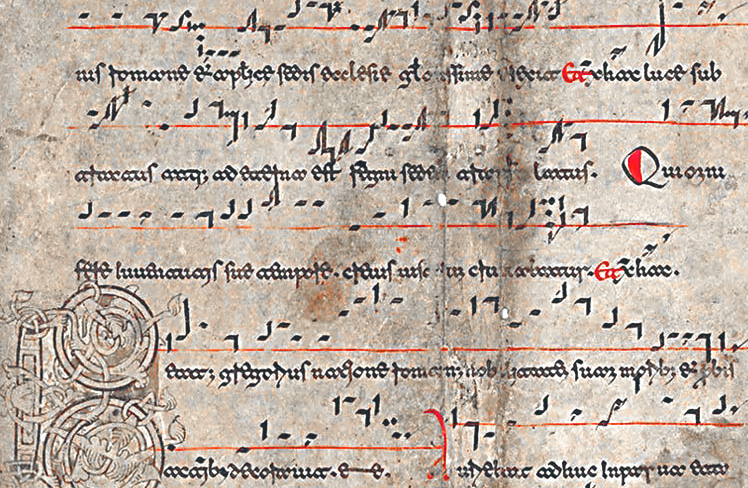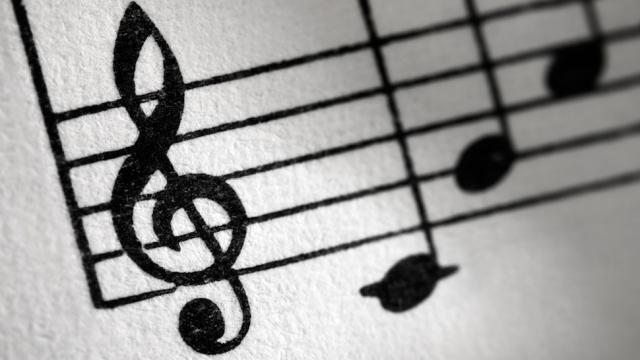Even the musically illiterate can appreciate the intricate beauty of a physical piece of sheet music — although, to them, the score itself means nothing. But even the notationally disinclined can now, thanks to the Smithsonian’s design blog, know where those pretty little pictures at the beginning of those big long lines come from — otherwise known as the treble clef.
But before we dive into the origins of the actual symbol itself, it’ll help to know something about the reasoning behind modern musical notation as a whole. Way back in the 9th century, there was no standardized semantic system for reading and recording music — the closest thing you might find was a notation used specifically for the Gregorian Chant. And even that only consisted of a few dashes and dots above the lyrics, indicating when to adjust pitch. It wasn’t until about a century later that you started seeing horizontal lines showing a base pitch incorporated, like the ones below.

The first real step towards standardization came with the addition of a letter, indicating the actual, authorially intended pitch of the line. Below, in this 15th century German manuscript, you can see that each four-line bar is marked with a small “C”, denoting “C” clef.

Now once you know that the treble clef we know and love today is, in fact, the “G” clef, you might be able to guess where that pretty little swirl came from. Without the ability to mechanically standardise symbols, replicating the “G” was left to human hands and all the error that comes with them. So depending on who happened to be writing up the score that day, chances are that “G” took on a slightly different form each and every time — especially when you take into account the fact that medieval handwriting was all about fancy (and hard-to-replicate) flourishes.

So with each industrious young scribe that copied down the notational “G,” the symbol changed ever so slightly. And then again with the next scribe, and the next, and the one after that, until we came to the bastardised and still-lovely-to-behold version you see today. [Design Decoded – Smithsonian Magazine]
Picture: Shutterstock/fotofreaks
